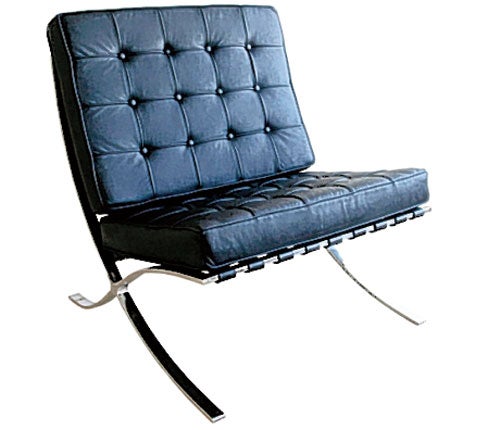The Secret History Of: The Barcelona chair

Such is the iconic status of the Barcelona chair that it has its own page in the Barcelona Yellow Pages. Not only that but it is one of the oldest modern classics still around. It was designed in 1929 for the Spanish Royal Family by the German designer Ludwig Mies van der Rohe.
Mies (as he is commonly known) is regarded as a pioneer of modern furniture. His style was deceptively simple with clean lines and he used modern materials such as stainless steel and plate glass in his buildings, which he referred to as "skin and bones" architecture.
Born Ludwig Mies, he added the van der and his mother's maiden name, Rohe, perhaps to hide his humble roots as a tradesman's son, who began his career in his father's stone-carving shop, and had no formal training.
He came up with a set of pioneering designs in the search for a style that would be suitable for the modern industrial age. While many of his ideas remained unbuilt, in 1929 he was asked to design the German Pavilion for the Barcelona Exposition. As part of his design (a replica of which stands on the site today), he made two chairs for King Alfonso XIII and his wife, Ena, in case they required a rest while visiting. According to the aforementioned Yellow Pages, Mies drew his inspiration from an Egyptian folding chair and a Roman folding stool. It was supposed to bring to mind a throne. Unfortunately the royal couple never sat in the pavilion.
The following year, he was appointed director of the Bauhaus school until 1933, when it was shut by the Nazis. Four years later he moved to the United States and eventually became an American citizen. He designed several high-rise buildings there, from the Chicago twin towers to the Seagram in New York. He was also asked to design the new national gallery for Berlin, and while he visited several times during its construction he never went back to live in Germany.
In 1950, Mies redesigned his old Barcelona chair using modern techniques which allowed the frame to be moulded from a single piece of stainless steel rather than being bolted together. The original pigskin seat was replaced with cow leather.
The chair was taken up by Knoll, who still produce it to this day.
While it is a mass-produced item, the upholstery consists of 40 individual panels from a single hide, so it has the qualities of a hand-made piece, which goes some way to accounting for the price: around £4,500.
Subscribe to Independent Premium to bookmark this article
Want to bookmark your favourite articles and stories to read or reference later? Start your Independent Premium subscription today.

Join our commenting forum
Join thought-provoking conversations, follow other Independent readers and see their replies